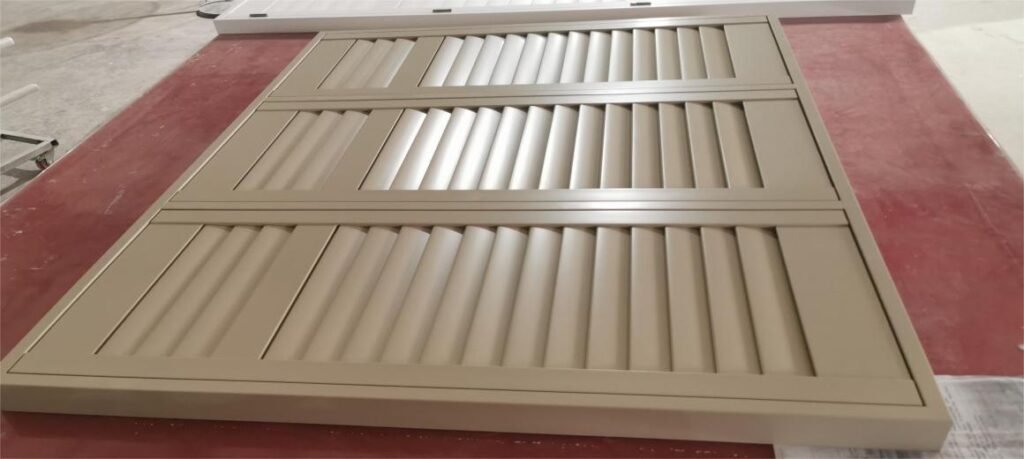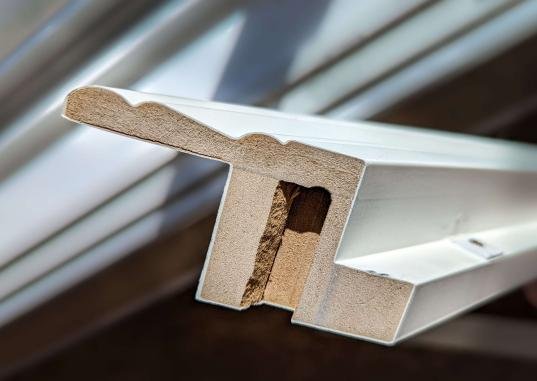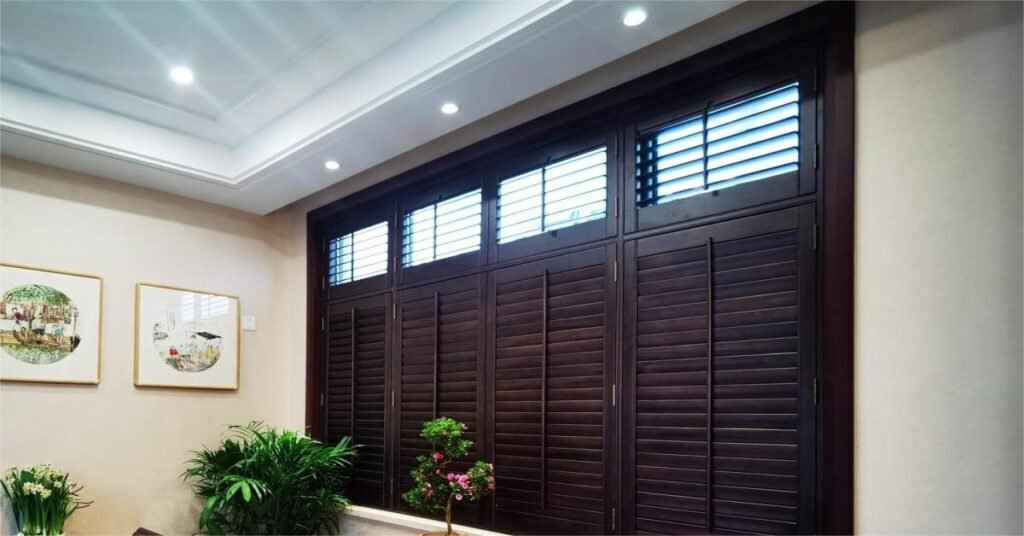Indoor shutters are window treatments installed inside a building to cover the windows. They are commonly used in homes, offices, and other structures for privacy, light control, and insulation. Indoor shutters are available in various materials, including wood, vinyl, and composite, and each material has advantages and disadvantages.

Selecting a suitable material for indoor shutters is crucial because it affects their functionality, durability, and appearance. The material can also impact the amount of light and air that enters the room, the ease of maintenance, and the overall style of the space. Therefore, it’s essential to consider the different materials available and their respective pros and cons.
Wood Shutters
Wood shutters are a popular choice for indoor use due to their natural beauty and warmth. Here are some of the pros and cons of wood shutters for indoor use:
Pros:
- Natural look and feel: Wood shutters provide a warm, natural look that can enhance a room’s overall style.
- Insulation: Wood is an insulating material, so wood shutters can help keep a room warm in the winter and cool in the summer.
- Durability: High-quality wood shutters can last years with proper care and maintenance.
Cons:
- Cost: Wood shutters are typically more expensive than other materials, such as vinyl or composite.
- Maintenance: Wood shutters require regular maintenance, such as cleaning and refinishing, to maintain their appearance and prevent damage from moisture and pests.
- Susceptibility to moisture: Wood is susceptible to moisture damage, so wood shutters should not be used in areas with high humidity or water, such as bathrooms or kitchens.
Best use cases for wood shutters indoors:
- Living rooms and bedrooms: Wood shutters provide a cozy, natural look.
- Offices and libraries: Wood shutters can add sophistication and warmth to these spaces.
Popular types of wood used for indoor shutters:
- Basswood: A lightweight and versatile wood that is easy to work with and has a uniform grain pattern.
- Cedar: A durable, light wood resistant to rot and decay.
- Oak: A solid and durable wood with a distinctive grain pattern.
Vinyl Shutters
Vinyl shutters are an affordable and low-maintenance option for indoor use. Here are some of the pros and cons of vinyl shutters for indoor use:
Pros:
- Low maintenance: Vinyl shutters are easy to clean and don’t require refinishing like wood shutters.
- Affordable: Vinyl shutters are typically less expensive than wood or composite shutters.
- Moisture-resistant: Vinyl is a moisture-resistant material, so it’s a good option for use in humid or damp areas.
Cons:
- Limited color options: Vinyl shutters are available in a limited range of colors compared to other materials.
- Appearance: Some people may prefer the look of wood shutters over vinyl shutters, which can have a more plastic-like appearance.
- Durability: While vinyl shutters are durable, they may not be as long-lasting as wood or composite shutters.
Best use cases for vinyl shutters indoors:
- Bathrooms and kitchens: Vinyl shutters are a good option for use in areas with high humidity or moisture.
- Children’s rooms: Vinyl shutters are a good choice because they are easy to clean and won’t warp or crack if wet or damaged.
Popular types of vinyl used for indoor shutters:
- Polyvinyl chloride (PVC): A durable and moisture-resistant material commonly used for indoor shutters.
- Thermoplastic: A variety of vinyl that is heat-molded to create a strong and durable shutter.
Composite Shutters
Composite shutters are made from a mixture of materials, such as wood and synthetic materials, to create a durable and long-lasting shutter. Here are some of the pros and cons of composite shutters for indoor use:


Pros:
- Durable: Composite shutters are highly durable and resistant to moisture and warping.
- Customizable: Composite shutters can be painted or stained to match any decor style.
- Low maintenance: Composite shutters are easy to clean and don’t require refinishing like wood shutters.
Cons:
- Cost: Composite shutters can be more expensive than vinyl or roll-formed aluminum shutters.
- Appearance: Some people may prefer the look of natural wood shutters over composite shutters, which can have a more manufactured appearance.
- Weight: Composite shutters can be heavier than other materials, so they may require more support when installed.
Best use cases for composite shutters indoors:
- Living areas: Composite shutters are a good option for use in living areas because of their durability and ability to be customized to match any decor.
- High-traffic areas: Composite shutters can withstand wear and tear in high-traffic areas of the home, such as entryways or hallways.
Popular types of composite used for indoor shutters:
- Medium-density fiberboard (MDF): A composite material made from wood fibers and resin. MDF is a popular choice for indoor shutters because of its durability and ability to be painted or stained.
- Wood composite: A mixture of wood fibers and synthetic materials that is highly durable and moisture-resistant.
Comparison of Materials
When choosing the best material for indoor shutters, it’s essential to consider factors such as durability, cost, appearance, and functionality.
Here is a comparison chart outlining the pros and cons of each material:

Overall, the choice between wood, vinyl, and composite shutters will depend on your personal preferences, budget, and the specific needs of your space. Wood shutters offer a classic and luxurious appearance and are the most durable option, but they require regular maintenance. Vinyl shutters are less expensive and low maintenance but have different visual appeal and insulating properties than wood or composite. Composite shutters can mimic the look of natural wood while being more durable and moisture-resistant and are more eco-friendly than other options.
Factors to consider when choosing a material:
- Durability: How well will the shutters hold up over time and in various environmental conditions?
- Cost: What is the budget for the shutters, and how much can be allocated towards the material?
- Appearance: What style or look is desired for the shutters, and which material best complements the decor?
- Functionality: Will the shutters be used for insulation or privacy, and which material will perform best in these areas?
By weighing these factors and considering the pros and cons of each material, homeowners can choose the best option for their indoor shutters.
Conclusion
In summary, when selecting the best material for indoor shutters, several options are available, including wood, vinyl, and composite materials. Each material has pros and cons, and it is essential to consider factors such as durability, cost, appearance, and functionality when deciding.

For those seeking a traditional and natural look for their indoor shutters, wood may be the best option. At the same time, vinyl and composite materials offer a more modern look and are generally more affordable. It is recommended to consult with a professional and assess your needs before deciding.
Ultimately, the best material for indoor shutters will depend on your individual needs and preferences. However, carefully considering the key factors, you can select a durable, cost-effective, visually appealing material that performs well in insulation and privacy.
